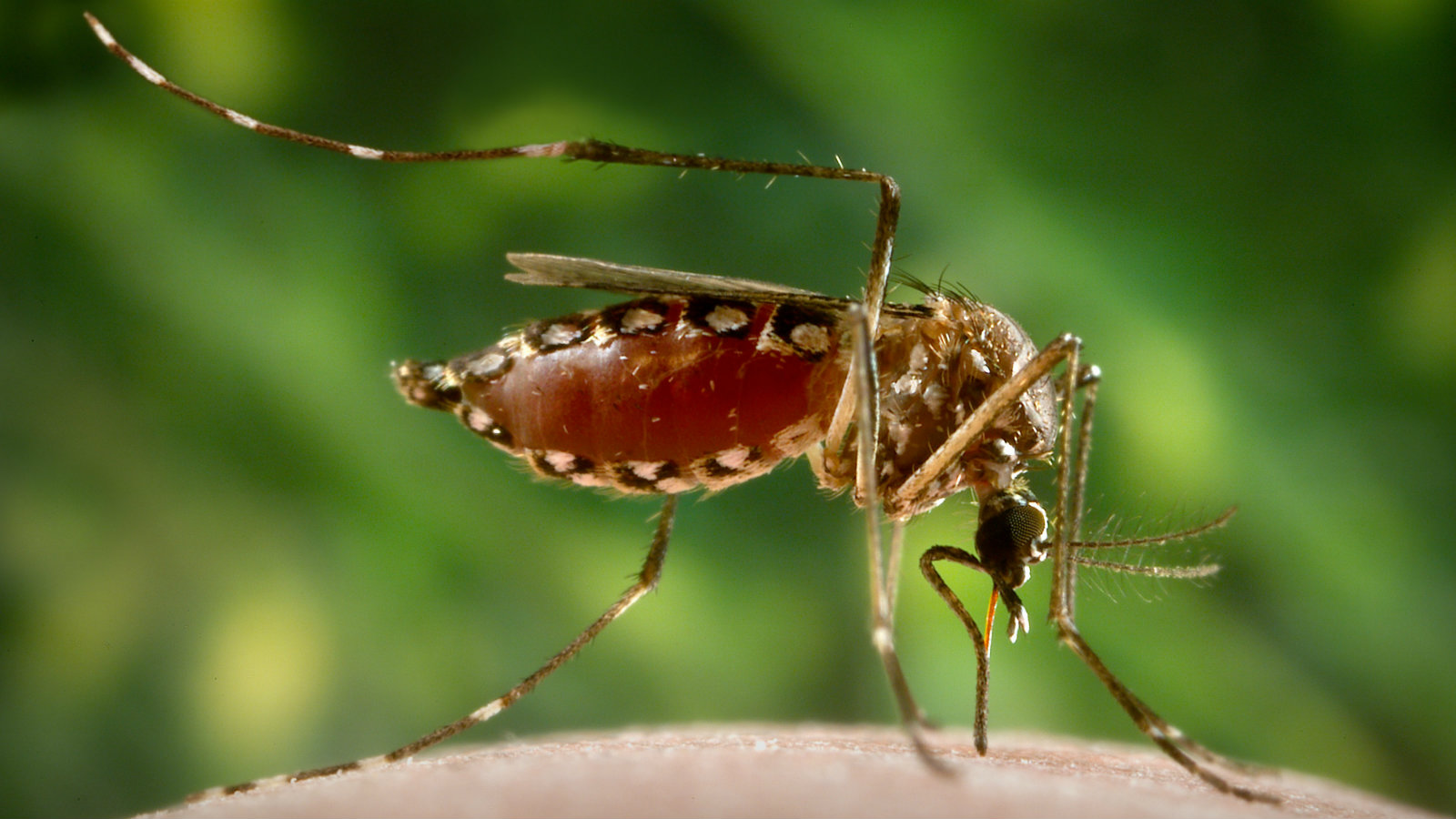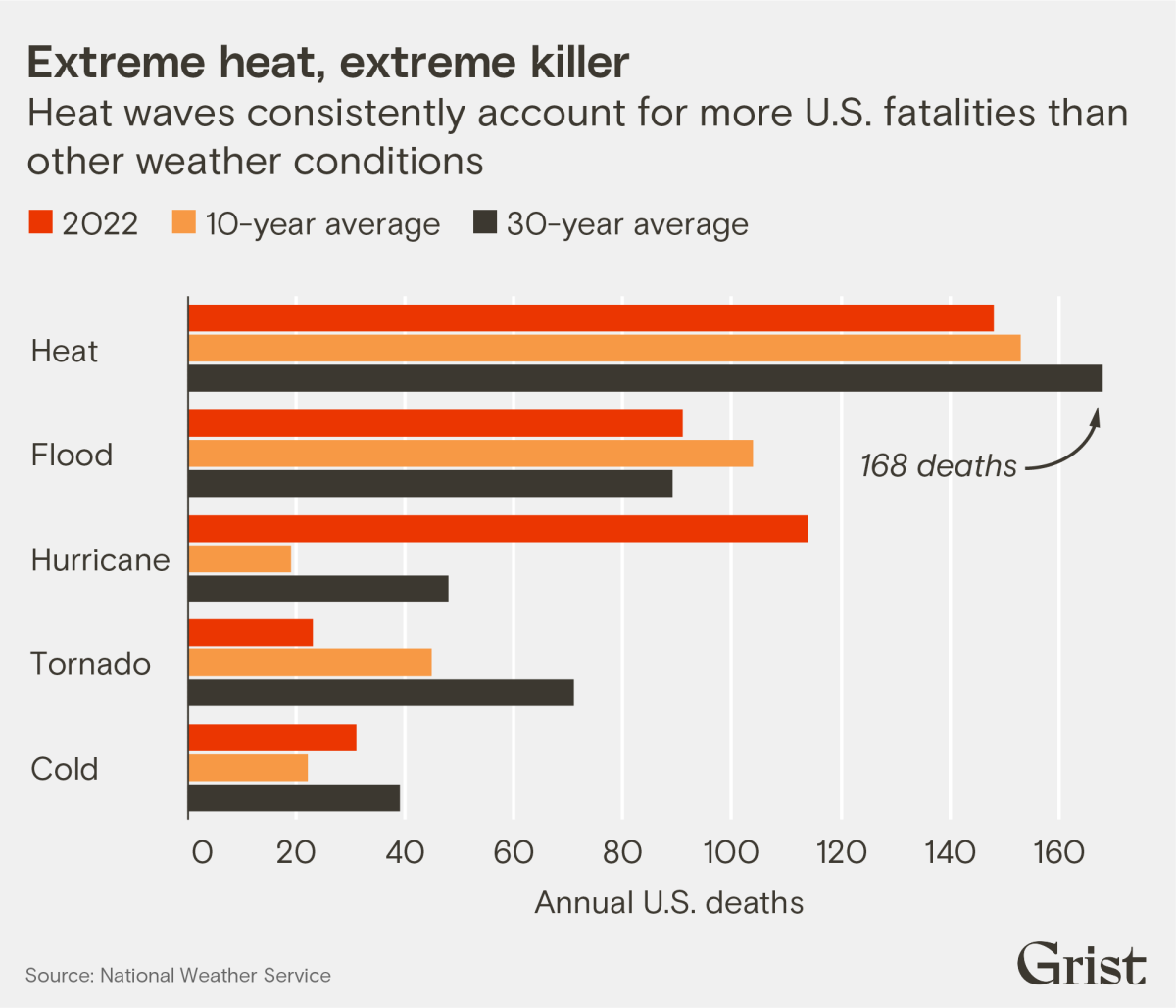Hello, and welcome to the second issue of Record High. I’m Grist staff writer Zoya Teirstein, and today we’re going to explore the health impacts of heat.
For weeks now, a “death ridge” of heat has been hovering over the United States, ushering in triple-digit temperatures in parts of the South and West. About a third of the nation is currently under a heat advisory, and casualties are starting to rack up. Texas has reported multiple fatalities, and Arizona has attributed at least 12 deaths to heat this summer so far. Those numbers will rise as the summer continues.
The U.S. heat wave, dire as it is, is not a global outlier. It’s the latest in a string of deadly hot spells that have gripped the planet in recent years. Last year, for example, a record-breaking heat wave in Europe, driven by climate change, was responsible for the premature deaths of at least 61,000 people, according to a study published in Nature Medicine last week. Heat is swiftly becoming a ubiquitous threat to people’s health.

Heat affects us in all of the expected ways — dehydration, heat exhaustion, hyperthermia, and heatstroke. But it claims lives in far subtler ways, too: Gun deaths spike during heat waves, suicides rise, there are more drownings as people flock to bodies of water to try and keep cool. (We’ll be unspooling some of the drivers behind those trends, especially how heat erodes mental health, later in this series.)
Perhaps the most unexpected connection is the effect extreme heat has on deadly infectious diseases — on illnesses caused by mosquito and tick bites, dangerous bacteria floating in bodies of freshwater, toxic algae lurking in saltwater, and deadly fungal spores that filter through the air around us and lurk deep inside of the earth. It exacerbates these illnesses by creating conditions for certain carriers of disease to proliferate, and by forcing humans into closer contact in cooling centers, in public pools, and at beaches. Think mosquitoes breeding by the millions in unusually tepid pools of water, and communities in developing countries with subpar sanitation systems cooling off in bacteria-laced water.
A meta-analysis that looked at disease outbreaks during and following extreme climate events, including heat waves, found links between mosquito-borne diseases like chikungunya virus, dengue fever, West Nile virus, and St. Louis encephalitis and extreme temperatures. The same study found links between heat and waterborne diseases such as vibriosis, a deadly bacteria that kills 1 in 5 people who develop severe symptoms. In Northern Europe, the study found that spikes in bacterial Vibrio vulnificus infections followed heat waves in 1994, 2003, 2006, and 2010. The authors saw a similar trend with a variety of other bacteria and parasites.
While attributing individual incidences of disease to a particular climate event is tricky, these results indicate that more work needs to be done to understand the connections between extreme heat and infectious disease. And it reflects what a wide array of researchers told me earlier this year, when I started asking around about what the dawn of an El Niño — the weather cycle that kicked into gear in the Pacific several weeks ago — will mean for public health. El Niño contributes to above-average warmth and a slate of erratic weather patterns across the globe.
El Niño, combined with climate change, will lead to a spike in mosquito-borne illnesses, tick-borne illnesses, bacterial disease, and toxic algae blooms.
The link between extreme heat and infectious diseases highlights an unfortunate reality of living on a planet that’s behaving fundamentally differently than it was even just a century ago: The health impacts of climate change are as varied as they are surprising. We really don’t have a good sense yet of how our lives, and our health, will be affected by these changes.
“We are not even at the beginning of the beginning of the beginning of understanding the implications of what we’re doing,” Jeff Goodell, the climate journalist and author of a new book on extreme heat, told me last week.
There is so much more to say on this subject. That’s why this week, Grist launched a multipart series on climate change and infectious disease in collaboration with the Associated Press. The project dives deep into the myriad ways in which climate change has already influenced the spread of infectious illnesses across the globe, and what doctors and communities are doing to prepare for a sicker future. And heat waves play a key part in all of this. To read more on these connections, check out the first story in the series here.
By the numbers
In the U.S., extreme heat kills more consistently than other weather events, including hurricanes and flooding.

Data Visualization by Clayton Aldern
What we’re reading
Southern Europe is a “giant pizza oven”: As a second “heat storm” bears down on Southern Europe, millions of people across the continent are bracing for another week of record-setting temperatures. My colleague Tik Root reports. ![]() Read more
Read more
340,000 UPS drivers poised to strike over extreme heat: During a summer that has already shattered temperature records, the 340,000 drivers, dispatchers, and warehouse workers currently in contract negotiations with UPS have made climate change and extreme heat a headline labor issue. If they don’t secure a contract by July 31, they are poised to initiate the largest single-employer strike in U.S. history. My colleague T. Khurana reports.![]() Read more
Read more
Heat kills even in places that are used to extreme temperatures: Triple-digit temperatures led to more than 10 deaths in Laredo, Texas, between June 15 and July 3 this year, “a toll unheard-of in this heat-accustomed corner of Texas,” the New York Times reports. ![]() Read more
Read more
Heat forces a country star off stage: Jason Aldean cut his show at the Xfinity Theatre in Hartford, Connecticut, short on Saturday due to heat stroke, a representative for the country singer said. Aldean ran offstage during his set and later said he was experiencing “a combination of dehydration and just heat exhaustion.” Temperatures in Connecticut pushed 90 degrees that day.![]() Read more
Read more
What not to eat when it’s hot out: The Washington Post has a list of do’s and don’ts when it comes to eating in extreme heat. Don’t: Eat heavy meals, drink too much caffeine, or rely on frozen foods to cool yourself down. Do: Eat fruits and veggies with high water content, drink lots of water, and eat protein.![]() Read more
Read more



